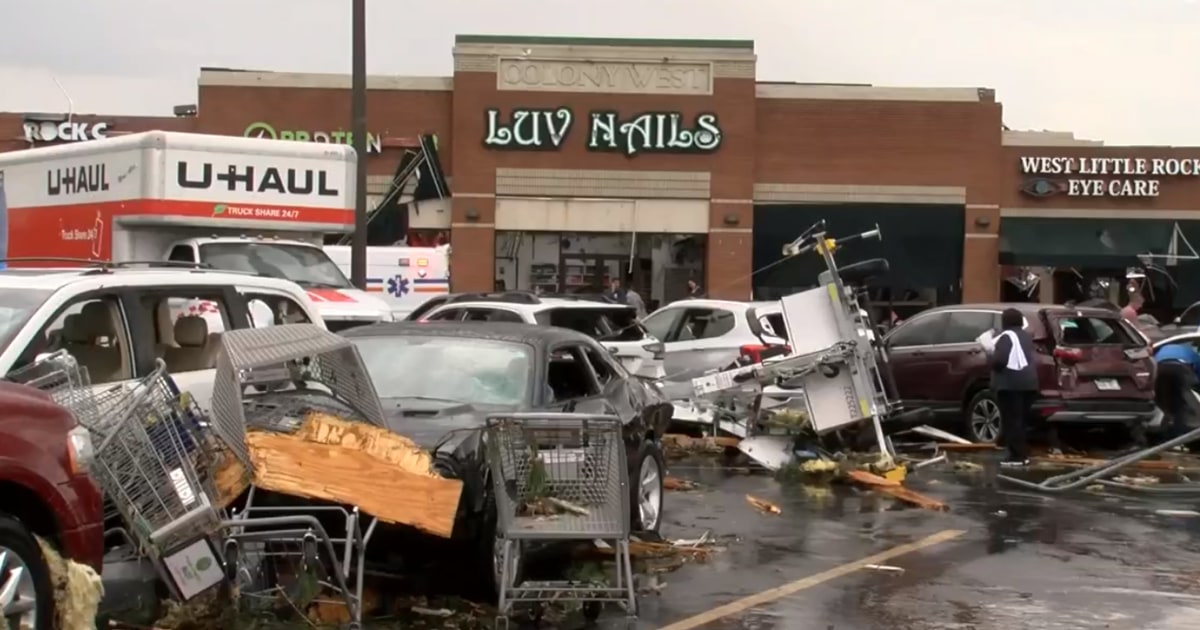Central Arkansas sustained «significant damage» on Friday, the state’s governor announced, after forecasters said a tornado touched down in North Little Rock, destroying homes and striking trees across the region.
«Praying for all who were and remain in the path of this storm,» Governor Sarah Huckabee Sanders said on Twitter.
Little Rock Mayor Frank Scott Jr. called for help from the National Guard and warned people to stay away from damaged areas.
The tornado that touched down in North Little Rock Friday afternoon also damaged Jacksonville and Sherwood, Meteorologist Travis Shelton said.
«We’re still dealing with a lot of active weather right now, we can’t even get out of our offices to investigate the damage,» said meteorologist Jim Reynolds.
The Arkansas State Emergency Operations Center issued a full activation in response to severe weather Friday afternoon, according to a statement.
Nearly 69,000 utility customers were without power in the state as of 4:30 p.m. ET, according to poweroutage.us.
States most at risk for strong, long-track EF2+ tornadoes stretch from northeast Iowa to southern Arkansas and northern Mississippi. This includes cities like Des Moines, Davenport, Little Rock, and Memphis.
The National Weather Service issued tornado watches from Iowa to eastern Texas, including parts of Iowa, Missouri, Illinois, Arkansas, Wisconsin, Kentucky, Tennessee and Mississippi. until Friday night. He agency warned that many tornadoes can be expected, as well as «widespread apple-sized hail» and wind gusts up to 70 mph.
Andy Beshear, Governor of Kentucky declared a state of emergency Friday afternoon ahead of severe weather expected in the western part of the state.
“Severe weather in the form of damaging wind gusts, large hail, and multiple tornadoes (some strong) is expected today and tonight between the Midwest and the Lower Mississippi Valley,” the National Weather Service warned in a statement. weather update.
A tornado warning was also issued in southern Iowa, where radar indicated at least one tornado, according to the National Weather Service field office in Des Moines.
Severe thunderstorms with flash flooding are also likely from the Midwest to the lower Mississippi Valley on Friday, according to the National Metereological Service.
«To further highlight the concern, the Storm Prediction Center has issued a Moderate Risk (level 4/5) of severe thunderstorms for parts of southeastern Iowa, northwestern Illinois, and northeastern Missouri, as well as an area spread from northeast Arkansas to far western Kentucky,» the agency said.
The storms will move incredibly fast at 55 mph and extend late into the night, creating very dangerous conditions, according to the National Weather Service.
Heavy rain rates of up to 3 to 5 inches could cause flash flooding in some localized areas. The areas most at risk for flooding as of Friday night are in «the Ohio, Tennessee and Lower Mississippi Valleys.»
This major storm system is set to spread weather hazards across the central and eastern US over the next few days.
«The deepening low pressure system responsible for much of the anticipated active weather is forecast to push northeast from the Central Plains today and enter the Great Lakes region tonight,» the National Weather Service said. «A strong cold front attached to this system will collide with warm, moist air entering the Lower/Middle Mississippi Valley, causing numerous thunderstorms from the Midwest to eastern Texas.»
The storms are then expected to travel eastward Friday night across the Ohio and Tennessee valleys «before weakening early Saturday in the Mid-Atlantic and Southeast.»
«Residents are encouraged to stay aware of the weather and have multiple ways to receive weather alerts,» the National Weather Service said.
Widespread strong winds from the deep low pressure system are also expected to affect a large area in the central and eastern US.
Damaging winds are also possible across much of the Great Plains, the middle and lower Mississippi Valley, the Tennessee and Ohio Valleys through Friday night.
«Strong winds combined with low relative humidity will create the right conditions for extreme fire behavior in the southern and central Plains,» the National Weather Service warned. «Otherwise, wind gusts up to 60 mph could cause tree damage and power outages in this region.»

